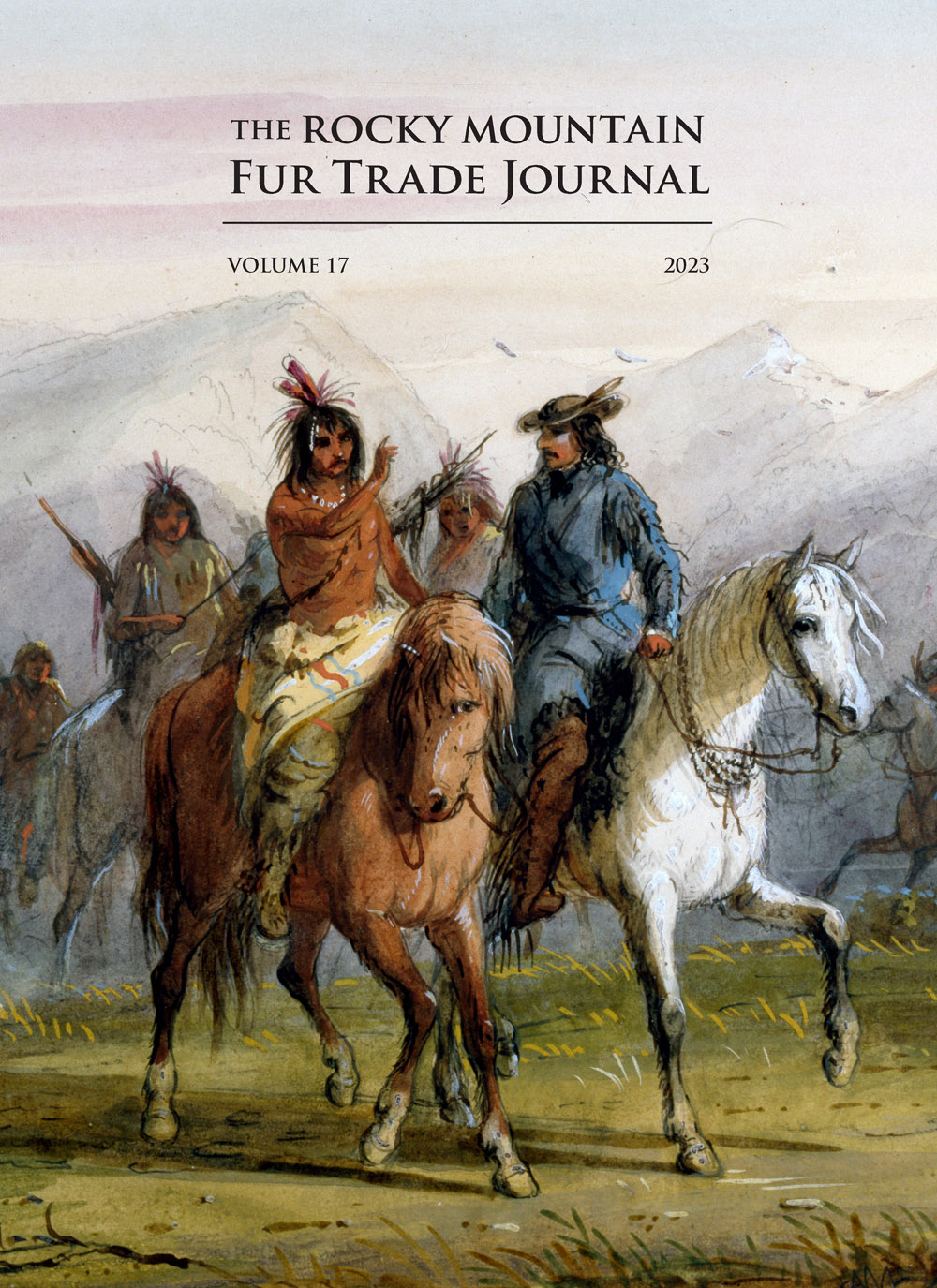$19.95
Rocky Mountain Fur Trade Journal, Volume 17
An annual academic peer-reviewed publication intended to further the knowledge and discussion of the Rocky Mountain fur trade era and provide an avenue for researchers to showcase their work.
Full color, perfect bound, softback, 8″ x 11″, 184 pages
ISBN: 979-8-9855361-1-9
Journal is provided FREE with a purchase of an annual membership!!! Click here to purchase a membership now!
Description
2023 Rocky Mountain Fur Trade Journal, Volume 17
Killing Competition with Kindness: Jedediah Smith, George Simpson, and the Aftermath of the Umpqua Massacre
by Thomas H. Holloway
In 1828, Jedediah Smith arrived at Fort Vancouver, the regional headquarters of the Hudson’s Bay Company on the Columbia River, to report that Indians had attacked his camp on the Umpqua River. Everything of value was gone and most of his men were dead. Why did the Hudson’s Bay Company, a competitor, help him?
Jedediah Smith’s Search for Melish’s River
by Sheri Wysong
To some historians, Jedediah Smith’s actions during his southwest expeditions of 1826-28 made little sense. This article discusses geography, contemporary geopolitics and cartography to hypothesize Smith’s real goals.
Mountain Men and Shoshone: Two Cultures Intersect During the Fur Trade
by Jim Hardee
Using period dairies and writings of trappers, the author investigates ways in which the values and customs of mountain men and Shoshone Indians overlapped and, at least from the mountain man’s point of view, both societies seem to have found mutual benefits from working together.
Ambush in the Coriacan Defile: Unlocking the Secrets of a Fur Trade Mystery
by George Capps
Sometime in the 1830s or 1840s, Indian raiders ambushed a Hudson’s Bay Company pack train in today’s O’Keefe Canyon, outside of Missoula, Montana. During the attack, a young Hawaiian employee was slain. This article looks at the cross-cultural connections of the Rocky Mountain and Pacific maritime fur trade enterprises that were influenced by Polynesian, English, Russian, and Alaskan Native peoples and their languages.
“Destroying the Pious Monster”: The Collapse of the US Indian Factory System
by James C. Auld
Decades before the rendezvous era, the US government had created a federal program to control trade with indigenous people living throughout the wilderness of America’s new boundaries. This article looks at the role Ramsay Crooks played in the demise of the US government’s Indian factory system to create opportunities for private enterprise.
Sublette County Historical Society, 2023
Additional information
| Weight | 1 oz |
|---|---|
| Dimensions | 11 × 8 × 0.5 in |

